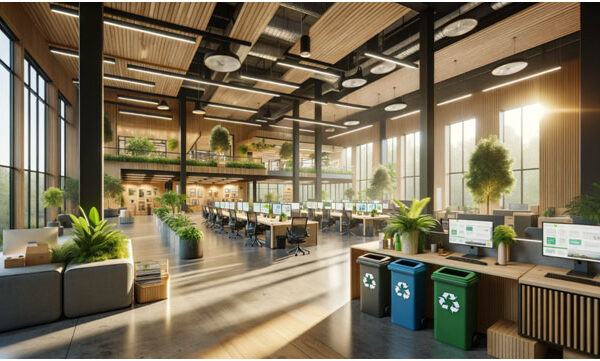
The commercial real estate market is already forecasting 2023 to be a year of significant trends that are sure to surprise even the most adept agent. From a shift in industrial absorption and the development of new zones of opportunity,there is no lack of substantial changes occurring in the sector. Let’s look at nine critical trends that you will want to keep your eye out for this year.
1. Hipsturbias
The name may sound funny, but if you’ve never heard it, you have not been paying attention.These areas continue to grow by housing recently married millennials who want to keep the hustle and bustle of the city but wish to tone things down a bit. “Urban-burbs” as they are also called are suburban areas that allow for easy access to public transportation and have several businesses within walking distance of the home.
Millennials are flocking to these precious gems because the housing is much cheaper than in the city, and this means that the retail landscape of those areas is soon to change to accommodate the newly minted homeowners. You can expect to see more health conscious supermarkets, quaint coffee shops, book stores, and more avocado toast. This is a trend you want to sink your teeth into right away.

2. Construction Costs Rising
This is a story carrying over from 2018. Construction costs are rising due to problems with the labor force and difficulty getting prime materials due to the trade war. Steel, porcelain, lumber, and other vital materials come from Canada, China, and other countries that have been sparring with the USA for some time now.
For the commercial real estate market, this is alarming as it means that setting up new businesses or production facilities can really hurt margins and ultimately affect the bottom line of any investor. Hopefully, the volatile political climate will ease as the year progresses, but in the meantime, it is better to be well-informed.
3. Hotel Occupancy to Continue Rising
This is a trend that has been going on for almost a decade, and we can expect more of the same in 2023. Hotel occupancy is expected to rise to nearly 67% according to the STR, and they say that it is mostly due to the high demand that offsets the incoming supply. This continued surge is impressive as businesses like Airbnb have really made a dent in the hospitality industry,and yet hotels seem to be coping with its effects.
For commercial real estate connoisseurs, this means increased business traffic yearly via conventions, events, and other events that are sure to drive profits and give the market yet another boost this year. Keep your eye out for the numbers at the end of the year, too, as 2020 is already looking good.
4. More Warehouse Developments
Amazon recently became ILPT’s largest tenant, and warehouse developments continue to grow as the internet swallows more and more commercial space. The warehouses of today are entirely different from those of old.They tend to be multileveled and store various products.
The operations managers in these new warehouses will have their hands full with all the changes, but it is essential that the savvy commercial real estate agent pay close attention to how it all unfolds as this could mean yet another spike in warehouse developments next year.
5. Hope for the Best but Expect the Worst
We don’t want to be grim here, but as the economy nears a full decade of expansion naturally, everyone fears a new recession at any moment. Downturns generally occur a couple of years after employment levels hit peak levels, and while there no tell-tale signs at the moment,it’s always better to be safe than sorry.
There may not be any need to mention that real estate is not resistant to business cycles and can be heavily impacted by even the slightest downturn in the economy. Keeping a close eye on the subject and keeping a “beware the good news” attitude is not the worst thing that can be done this year.
6. Less Brick and Mortar Retail Bankruptcies
A lot of once-significant players in their respective industries shut their doors last year, including established brands like Sears, Claire’s, and Brookstone. The trend is expected to continue this year but with a bit of a slowdown. Brick and mortar retailers are beginning to adjust to the ever-increasing presence of online shopping, and closing certain locations is often how they are changing and avoiding bankruptcy. Stores are focusing on their online presence, and this can only help them in the long run. The animal is not dying; it is merely adapting to change.
7. Groceries Moving Online
Similar to other retail locations, grocery stores are feeling the pressure of new home delivery services that are making life a lot easier for families at home. Commercial real estate players should expect to see more significant chains focus their attention to online services while also closing down major locations in urban areas.
The grocery store transformation will likely be much slower than in any other retail business, but it is essential to see what moves they make in 2023 as the internet continues to penetrate the way that stores in almost any industry do business. Everyone needs groceries, but how they get them will come down to grit.
8. Demand for Office Space to Slow Down
While at the moment stable, the office space leasing sector may see a very slight slowdown in need this year as employment numbers seem to settle. The trends of 2018 in this area are being put into question, and yet the come-down is not expected to be too harsh. Start-ups and established companies are coasting at the moment and barring some major change, everything in the office space world looks to be business as usual.
9. Commercial Real Estate Tech Boom
Commercial real estate players can expect more help this year as start-ups are being offered new technology by global fund investors who want to see even more growth in the industry. The many technological advances that are coming are sure to impact the industry in many ways. You can be sure that your competitors are already making room for more tech in their portfolios and that means you should, too.
Featured Image Credit:Free-Photos / Pixabay
In Post Image Credit: geralt / Pixabay




